How to backup Outlook email with File History on Windows 10
You should back up data on your computer regularly. If you use Outlook to manage your email, you also need to keep the information in it backed up. If not, you run the risk of losing email, contacts, jobs and more.
Windows 10 has a built-in backup utility called File History. The article will show you how to use File History to create a copy of the Outlook file, and give some mistakes you should avoid.
How to backup Outlook email with File History on Windows 10
- How to use File History
- Select a backup drive
- Set backup frequency
- Select the folder to backup
- File History and Outlook
- Replace for File History
How to use File History
Although there are third-party programs with more rich features, File History is built into Windows 10 and will allow you to back up your files to another drive. You can then restore them if the original files are somehow removed.
To start, press Windows + I key to open Settings. Navigate to Update & Security> Backup .
Select a backup drive
You will see the Add a drive option . Click here to select the drive you want to back up your files.

If possible, you will find that you can choose other drives in the system itself. However, using an external drive will be more appropriate. This is because if something happens to your computer, there are many chances of the external drive being unaffected. It will also make it easier to transfer data between systems.
If you don't see the option to add a drive, it means that a drive has been selected. Click the More option to find the drive, on the line that begins with Total space on . If it is not the drive you want, scroll down and click Stop using drive . Navigate back to the previous page and follow the instructions above.
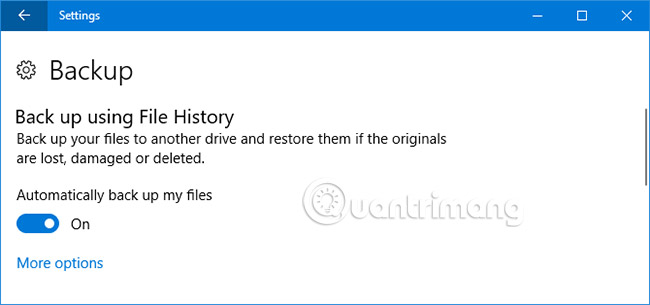
Once you have selected the drive, the File History will be turned on automatically. If not, just transfer Automatically back up my files to the On state .
Set backup frequency
When the drive is selected, you need to decide the frequency of the File History.
The Back up my files menu is set to Every hour by default. However, you can change this to other time periods or daily, depending on how you want to update your backups.
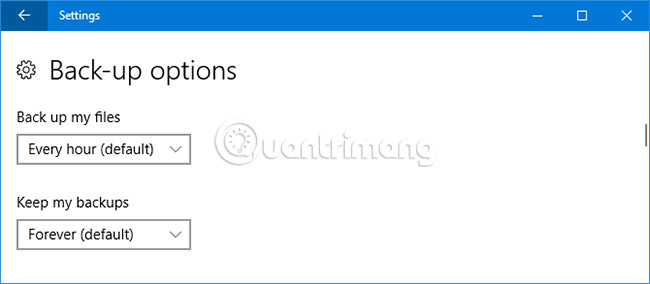
The Keep my backups menu determines the time period until your backups are deleted from the drive. They are set to permanently (Forever) by default, but you can change this to different monthly or yearly intervals. In addition, the Until space option only needs to delete files when the drive is full.
Select the folder to backup
Next, it's time to choose what you want to be backed up. If you are on the main Backup page, click More.
There is a section on this page called Back up these folders . By default, some folders are included in your user account, such as Downloads, Documents, Pictures and other folders.
If you want to backup one of these folders, please refer to the article: Instructions on how to use File History to backup and restore data.
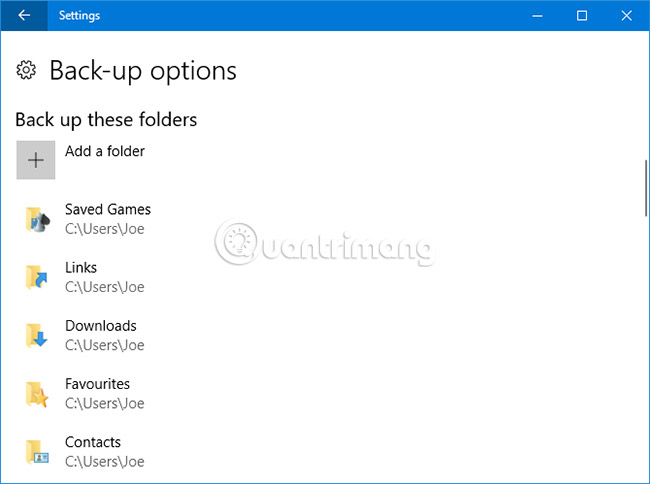
Your Outlook file is stored in C: UsersNAMEDocumentsOutlook Files, so they will automatically be included.
Click Add a folder . After that, you can browse to the Outlook folder in Documents and select Choose this folder .
To remove a folder from the list, simply select the folder and click Remove.

You can also exclude folders from backups. This is useful when you want to back up a folder that includes many subdirectories, and there are several folders you want to exclude.
Scroll to the Exclude these folders section and click Add a folder . Browse to the folder you want to exclude, then click Choose this folder .
File History and Outlook
Before using File History to back up Outlook files, there are a few things to note.
File History will only backup files that are not used while it runs. That means if you open Outlook, your files will not be backed up.
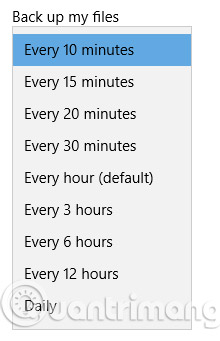
Thus, the best way to make sure your Outlook files are backed up is to close the program while File History is running or set the frequency frequently enough to capture everything (see Setting up the backup frequency at on).
The fact that Outlook files are up to gigabytes in size is also quite common.
File History does not manage its backups in a particularly smart way. Although some utilities will back up step by step, only update files that have changed since the last scan and delete old files, but File History does not do that.
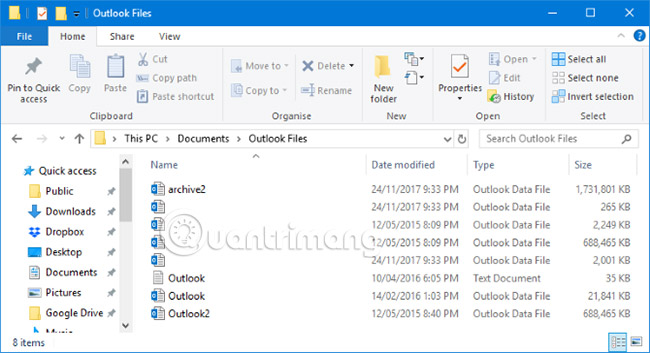
Instead, File History will notify you that the data has changed and back up the entire file again. If your Outlook file is too large, you will soon run out of space on the drive. To fix this, install File History to keep the backups until the drive is full.
Also, periodically go to Settings> Update & Security> Backup> More options> See advanced settings> Advanced settings> Clean up versions .
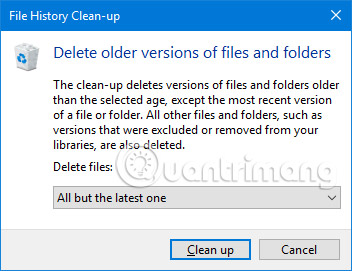
Here you can delete your backups based on the creation date. Use the Delete files menu, set it to All but the lasted one and click Clean up .
Replace for File History
If you just want a way to automatically backup Outlook and File History not to do it for you, see the article: A simple 4-way guide to backing up Outlook data.
This article shows you how to use Outlook to automatically create an archive file that you can set to store on your external drive.

This constantly updated archive can run when you open Outlook, so this is a great alternative if the above methods encounter problems.
By following the above tips, you will ensure that your Outlook files are kept safe. Remember, backup operations don't seem to matter until you lose data. At that point, you will always want to back up data, so do this today to protect yourself.
Good luck!
See more:
- Instructions for basic steps to backup Outlook data
- Backing up data in Outlook Express is easier
- Backup and restore the signature in Outlook 2013
 How to hide suggestions on Windows 10 Timeline
How to hide suggestions on Windows 10 Timeline How to set up Google as the default search engine for the Start menu on Windows 10
How to set up Google as the default search engine for the Start menu on Windows 10 7 ways to turn off Windows 10 laptop screen
7 ways to turn off Windows 10 laptop screen Instructions for installing Tails on Windows
Instructions for installing Tails on Windows How to turn off Shared Experience feature in Windows 10
How to turn off Shared Experience feature in Windows 10 How to enable or disable text suggestions on Windows 10
How to enable or disable text suggestions on Windows 10